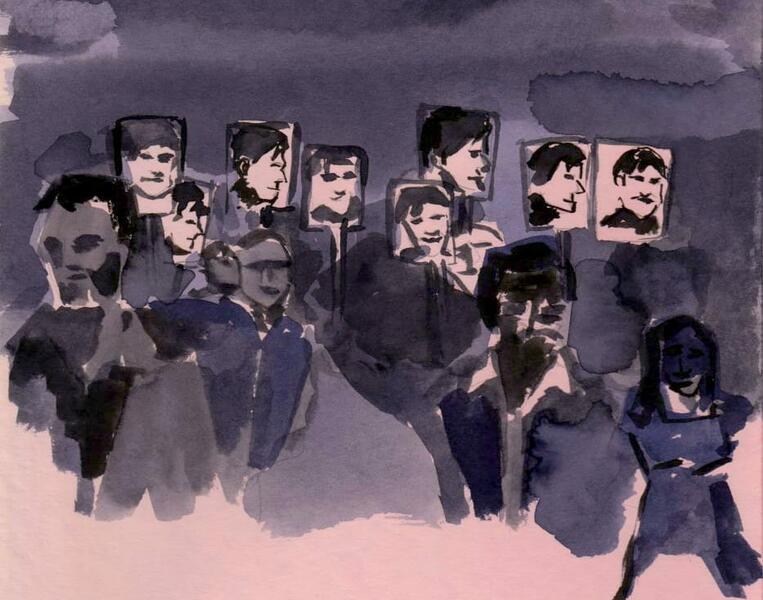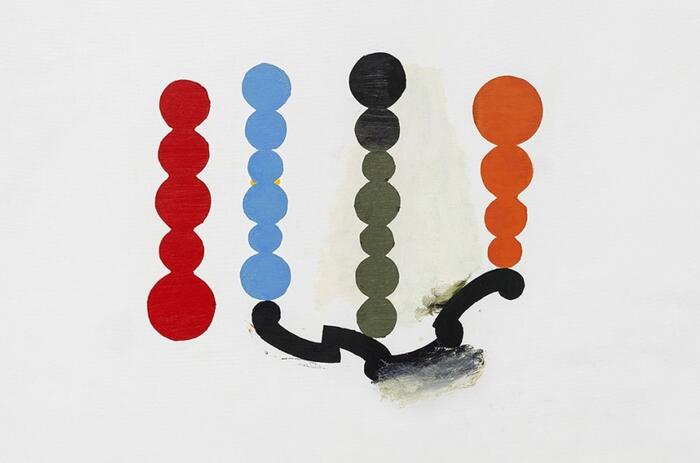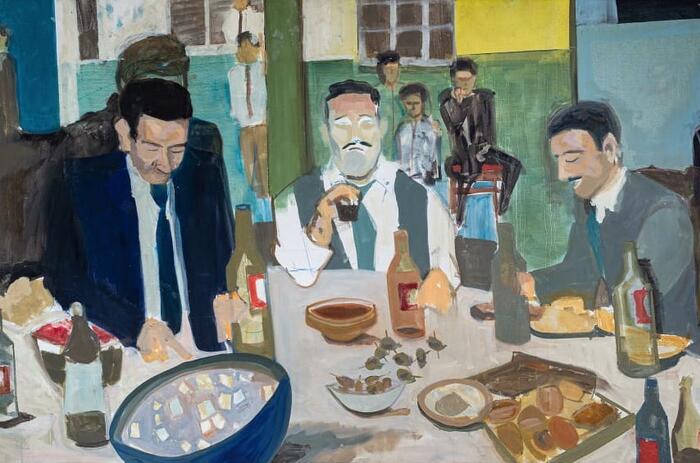VIGIL GONZALES EXHIBITS “ESPECTROS” BY FERNANDO NUREÑA
Available both in-person and online, the exhibition (Specters) brings together works by the Peruvian artista that, with a text written by researcher Paula Eslava, translate a social and political postulation into easthetics.

Eslava’s text is composed of a series of notes that seek to trigger ideas about the uses of the historical image and its possible validity in the present:
Between the 1970s and the end of the 1980s in Peru, the future of the country was being disputed between different political forces, some pushing for neoliberal measures and others advocating leftist policies, both with forms of organization that involved different levels of violence.
In 1977, during the Morales Bermudez government, thousands of workers organized in a nationwide strike to protest the economic crisis in which the country was immersed. This organization was against the dismantling of the economic policies and labor rights established by the Velasco Alvarado government, which had its focus on the working class sector. As a result of the mass demonstrations, the regime was weakened and forced to call elections.
In 1980, then President Belaunde Terry, together with his Minister of Economy, put together a team of technocratic advisors called Dynamo. Their objective: to devise and promote economic measures to reduce the fiscal demands on companies, reduce the State’s participation and strengthen the private sector through credits.
At the end of the decade and during Alan Garcia’s term in office, several young people were arrested on accusations of having participated in the confrontation between Shining Path supporters and police forces in Manco Capac Square in Lima. The confrontation was understood to be part of the Shining Path’s boycott of the municipal and regional elections to be held that same month. This led to the tightening of military control of the capital.
During these last few years we have seen the reappearance of some of the symbols of the history of the local left in marches, posters and social networks. These images are occasionally used as part of a narrative about a past momentum read in a certain nostalgic key, but with difficulties to take real hold in the political disputes of the present. These images, sometimes closer to evocative surfaces than to devices conscious of their origin and the conditions that produced them, are sometimes reduced to their most formal dimension.
Without denying the political potential of recovering symbols from other historical moments, the question arises as to how to construct continuous lines from the images of the past to the meanings and demands of the struggles of the present.
“It is not possible to attend to and discover the real without an operatic and finely tuned fantasy.”-Jose Carlos Mariategui. Published in Variedades: Lima. January 15, 1930.
When one learns to write, the exercise of copying is a recurrent learning method to master this new language. In doing so, two phenomena occur: estrangement and learning, not necessarily in causal order. The first consists of this moment in which one becomes disconnected from the meaning and begins to pay attention to questions such as phonetics or aesthetics. The second corresponds to the moment when, as a result of repetition, one learns to master this language.
Perhaps in this same way, this dual phenomenon can result in a productive metaphor at the moment of thinking images, providing the process of estrangement with mechanisms of abstraction and delocalization that allow us to subjectivize the signs in order to reinvent their uses and applications.
Paraphrasing John Berger, given the impossibility of reintegrating images into the temporal context from which they were taken, it must be recognized that the task of narrating through images (he applies it specifically to photography) is that of their assimilation, their grouping and transformation into an active experience, that is to say, making the journey of the image part of the experience lived in the world.
Fernando Nureña Cruz (b. 1993 in callao, Peru) is a visual artist and graphic designer. He lives and works in Lima, and studied at the Art School of the Pontificia Universidad Católica del Perú. His work has been shown in some exhibitions in the city of Lima: Mixtape (Galería del Paseo, 2020), En/para/sí (solo project @ Suero) Third Prize ICPNA Arte Contemporáneo (Espacio Juan Pardo Heeren, 2020), Colaboración Eficaz (Laboraleatorio, 2019), Noche de videos 2 (Sala Luis Miró Quesada, 2017), 35 Salón Nacional de Grabado (ICPNA, 2016), among others.
VIGIL GONZALES is conceived as a contemporary art gallery oriented towards the visibility and promotion of artistic production within the Peruvian and Latin American scene. Thought as a space for research and cultural, disciplinary and knowledge exchange, the gallery focuses on artists whose work dialogues with the socio-political issues of the region.
Espectros
Until June, 7th
VIGIL GONZALES Gallery
Jr Grau 654 - Urubamba - Valle Sagrado de los Incas






